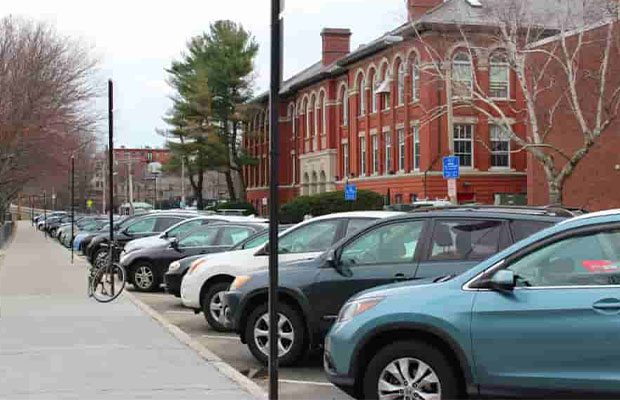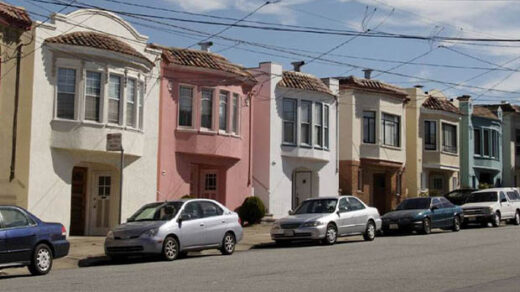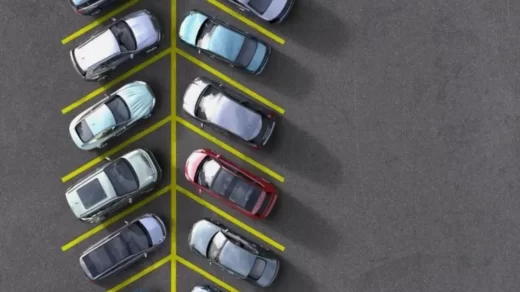You might be curious as to what is meant when people talk about on- and off-street parking if you are new to the parking industry or have recently taken over your organization’s parking program.
When cars are parked on the street, along with the sidewalk, or anywhere on the street is called On-street parking. What Is off-street parking?
Parking your car somewhere other than on a public street is known as off-street parking. These are typically parking lots and garages. Both indoors and outdoors are options for off-street parking. Private parking lots, garages, and driveways are also included in off-street parking.
Keep reading and learn more about off-street parking and on-street parking, and the difference between them.
More To Explore:
Table of Contents
What Is Off-street Parking?
In a parking lot or garage that is enclosed, there may be spaces available for vehicles to park. Municipalities, governmental agencies, and private businesses can all own parking lots. If the parking lot has access and control rules in place, they may include a fee-based parking system, designated parking for permit holders, clients, tenants, and visitors, or a combination of the two. For parking lots, there are many access and control options, including parking meters, gated parking systems, mobile payment apps, and more.
Different Types Of Off-street Parking
- Private Lots: Off-street parking spaces known as private lots are available to residents who belong to the association or are somehow connected to the attached property or company. While there are some locations where you can pay a required fee to access private lots, it is not always an option; it depends on the location and parking requirements. College campuses and residential neighborhoods frequently have these private spaces, which are managed by a private organization or person.
- Public Parking Lots: Almost all drivers with a license have parked in parking lots at some point or another. Some are privately owned and only used for their customers, despite the fact that many are locally governed. For instance, have you seen those “For Customer Parking Only” signs before? These can also be designated to particular events, like music festivals, and are very prevalent near bars, shops, and restaurants.
- Parking Garages: Similar to private lots, these frequently charge a fee for parking for a specific amount of time. Free parking may be available in some locations, but you may only park for about three hours before getting a ticket. When talking about parking garages, there are several different types:
- Single-level garages
- Multilevel garages
- Underground garages
- Automated parking garages – this involves driving your vehicle on the parking system, and the system automatically moving your car to an available space
Again, different off-street parking areas will have unique policies, charges, or requirements that you must follow in order to park there. Some employers include free parking in garages as part of their benefits package; others might not. Additionally, some might be free with restrictions while others might be completely off-limits to the public (like private residential areas). As long as you are aware of the requirements, which vary from case to case, you should be able to make wise parking choices.
What Is On-street Parking?
In a designated area on a street, there are parking spots for cars that can be used. This is known as on-street parking. On-street parking is made available to the general public in many Canadian municipalities, whether it is in a residential or commercial area. If there is a paid parking regulation in place, on-street parking is typically managed and controlled using a combination of parking meters, parking enforcement services, and parking signage that specifies the rules and instructions for the paid on-street parking area.
Despite the fact that some on-street parking operations might not have a paid policy in place, there are usually rules that specify the hours that cars can be parked on the road or how long they can park. Municipality parking or bylaw officers are in charge of enforcing such rules.

Difference Between On And Off-street Parking
Cost And Time Of Construction
On-street parking is generally less expensive to develop than off-street parking, whose construction costs are generally higher. Additionally, on-street parking is likely to take less time to develop and implement than off-street parking facilities. Because it mostly involves site selection, painting, etc., the approximate time for development required on-street is fairly short. Off-street, on the other hand, takes a while because it necessitates basic steps like facility construction and financial arrangement.
Physical And Operational Requirements
On-street parking requires some physical improvements, such as painting, sign installation, parking meters, etc. In contrast, off-street parking necessitates the acquisition of land, paving, setup of a toll collection system, equipment, and building of administrative structures, among other things.
In terms of the operational setup, on-street parking must be inspected by the traffic police or the private sector. Off-street does not require enforcement, and the private sector can run the facility entirely.
Place Of Parking And Users
Parking your car somewhere other than on the street is referred to as off-street parking. Parking lots and garages are typically included in these. Both inside and outside are possible locations. Private lots, garages, and driveways are also included.
On-street parking is used sporadically by transient individuals who stay there only briefly. Users of off-street parking range in length from short-term to long-term, i.e. monthly tenants and regular users.
In many urban areas, there are specific areas designated for parking only. These parking areas are typically set back from the main traffic flow. Off-street parking is the term used to describe this type of parking. They may be run by either public or private organizations.



